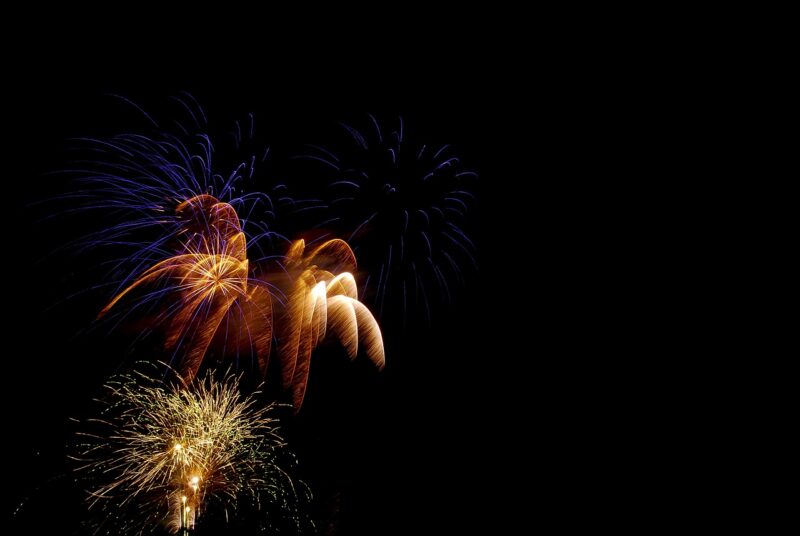
Fireworks, as we know them today, are synonymous with celebration and grand displays of color and sound. However, the origins of these magnificent pyrotechnics can be traced back to ancient China, where they were initially invented for entirely different purposes. This article explores the fascinating history behind fireworks, their invention in ancient China, and how they evolved into the spectacles we enjoy today.
1. The Early Invention of Fireworks
The invention of fireworks dates back to the Tang Dynasty (618–907 AD), a period marked by cultural and technological advancements. Initially, fireworks were created by the Chinese through experimentation with various materials. The earliest forms of fireworks were bamboo stalks filled with gunpowder. When heated, these bamboo tubes would explode, producing loud sounds that were thought to ward off evil spirits.
These early “fireworks” served primarily as a form of entertainment during festivals, but their use quickly spread as people began to understand the awe-inspiring potential of explosive mixtures. The creation of gunpowder, made from saltpeter, sulfur, and charcoal, was a turning point for the pyrotechnics industry. As the formula was refined, the ability to create larger and more impressive displays emerged.
2. The Symbolic Significance of Fireworks in Chinese Culture
In ancient China, fireworks were not just about spectacle; they held deep symbolic meanings. Fireworks were believed to possess the power to scare away evil spirits and bring good fortune. During the Chinese New Year celebrations, loud noises played an essential role in driving away the Nian monster, a mythical creature that terrified local villagers.
The use of fireworks became an integral part of celebrations, especially for special occasions like weddings and festivals, serving as a medium to express joy and happiness. Moreover, the brilliant colors and loud sounds of fireworks symbolize the vibrancy of life itself.
3. The Evolution of Fireworks Technology
As the centuries progressed, so too did the technology behind fireworks. The Song Dynasty (960–1279 AD) saw significant advancements in the development of pyrotechnics. This period marked the emergence of specific fireworks designed to create beautiful patterns in the sky, rather than just explosive impacts.
In addition to shells packed with gunpowder, the Chinese began experimenting with different chemical compounds to produce various colors. For instance, strontium compounds produced red fireworks, while copper salts generated blue hues. This laid the groundwork for the intricate displays that would later become a hallmark of fireworks across the globe.
4. Fireworks Spread Beyond Chinese Borders
By the time the Mongolian Empire expanded, so too did the knowledge of fireworks and gunpowder. As traders, soldiers, and travelers shared their knowledge, fireworks began to make their way to the Middle East and Europe.
In Europe, the 13th century saw the adoption of these explosive devices for military purposes, leading to advancements in warfare technology. However, it was not long before the beauty of fireworks was recognized, and they became a staple in grand celebrations, notably prominent during royal events and national holidays.
5. Modern Fireworks: From Ancient Invention to Modern Entertainment
Today, the art of fireworks has evolved into a sophisticated and thrilling form of entertainment. Fireworks displays are now common around the world, marking significant events such as New Year’s Eve, Independence Day, and various cultural festivals.
Modern technology allows for precise timing and choreography, making fireworks displays more impressive than ever. The combination of various colors, shapes, and sounds creates a multi-sensory experience that continues to captivate audiences.
However, at the heart of this modern spectacle lies the same foundational principles established by those ancient Chinese inventors. Their creativity and innovation laid the groundwork for what we now consider a global tradition of celebrating with fireworks.
6. Conclusion
The invention of fireworks in ancient China represents a remarkable story of innovation, culture, and transformation. What began as a means of warding off evil spirits and celebrating life has grown into a worldwide phenomenon symbolizing joy, celebration, and community. Today, each firework display carries a piece of history, reminding us of our shared human experiences that transcend borders and time.
Whether enjoyed at a local festival, New Year’s Eve, or international events, fireworks continue to light up the sky, captivating people of all ages and backgrounds. As we reflect on their origins, we can appreciate the rich cultural history that underpins each bright explosion of color and sound that illuminates our nights.






